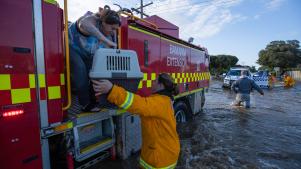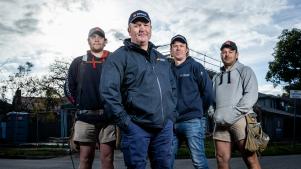As the leading industry association in the building and construction industry, Master Builders Victoria (MBV) was invited by the Victorian Government to participate in a briefing by Dr Nick Scott from the Burnet Institute earlier in October.
The Burnet Institute's health experts and researchers are working in collaboration with Australian scientists and institutes working to support the Victorian and Federal Governments in their responses to the COVID-19 epidemic. The high-level briefing was provided to stakeholders to help them further understand the COVID-19 modelling that is being used as part of the Victorian Government's decision-making process and creation of Victoria's Roadmap.
We hope that the overview, provided exclusively to MBV members, provided below sheds some light on the Burnet Institute’s modelling.
What is the model?
COVASIM is an agent-based model, which uses characteristics such as age, contacts, and community group participation to determine susceptibility to getting COVID-19. Modelling interventions include testing, effectiveness of contact tracing, vaccination programs and restrictions.
Based on the current growth rate of COVID-19 cases in Victoria and the Victorian Government’s recent announcements of re-opening, case numbers are expected to peak in mid-December. As we draw closer to this time, modelling will be able to determine if we are in a higher or minimal risk scenario. It is difficult to ascertain whether the current rate will be sustained as there are a variety of limitations to the model.
Planning our re-opening
Allowing for an easing of restrictions when 80% of the adult population are vaccinated could lead to a second peak. This is described as the epidemic of the unvaccinated. This is concerning as the effective unvaccinated rate, including children, will be about 40% of our population. The healthcare system is at risk of being inundated if all these infections were to occur at once. Even at a 90% vaccination coverage, the virus would continue to spread rapidly if restrictions on density limits and masks on public transport were suddenly lifted.
There are interventions that could be used to flatten this second potential peak. This includes maintaining elevated levels of testing, as vaccinated individuals are less likely to get a test when experiencing mild symptoms. A variety of additional targeted public health and testing interventions could reduce non-household risk by 15%. Technical requirements on ventilation, more outdoor activities and better-quality masks can all mitigate these risks.
The modelling experiences a major data lag, as new interventions and changes are updated only once every 2 weeks. Looking at our own industry experience, a lot can change in this time. Consequently, levels of uncertainty in the modelling increase when looking beyond 4 days. Seasonality impacts vaccine efficacy parameters against the Delta strain and sustained growth rates are uncertain. It is therefore crucial for the Burnet Institute to continue to update its model as new data becomes available. Understanding the average length of ICU stays is an example of this. The Burnet Institute's modelling is limited as it is hard to ascertain this information, however Victoria can use information from NSW to determine peak ICU demand. Since MBV’s meeting, the Burnet Institute has revised the hospital admission rate, lowering it than initially forecast. This is partially due to the younger population being less likely to get severe symptoms and consequently spend less time in hospital. Our states swift vaccine roll out has proven to halve expected mortality rates as hospital systems will less likely be overwhelmed.
What the Burnet Institute's modelling means for the building and construction industry
The modelling was made prior to the vaccination mandate being introduced for the building and construction industry, and the recent shutdown in some areas of our sector. Therefore, it is unlikely that the modelling will consider the full effects on our industry. Demographic data from our industry has also not been included/is limited, so gaining a better understanding of what this modelling means for our industry is not currently available. The major assumptions by the Burnet Institute that would affect our industry is vaccination take ups. Our sector’s assumed compliance is predicated at a 95% take up rate.
If you would like more info on this briefing, please contact [email protected].





